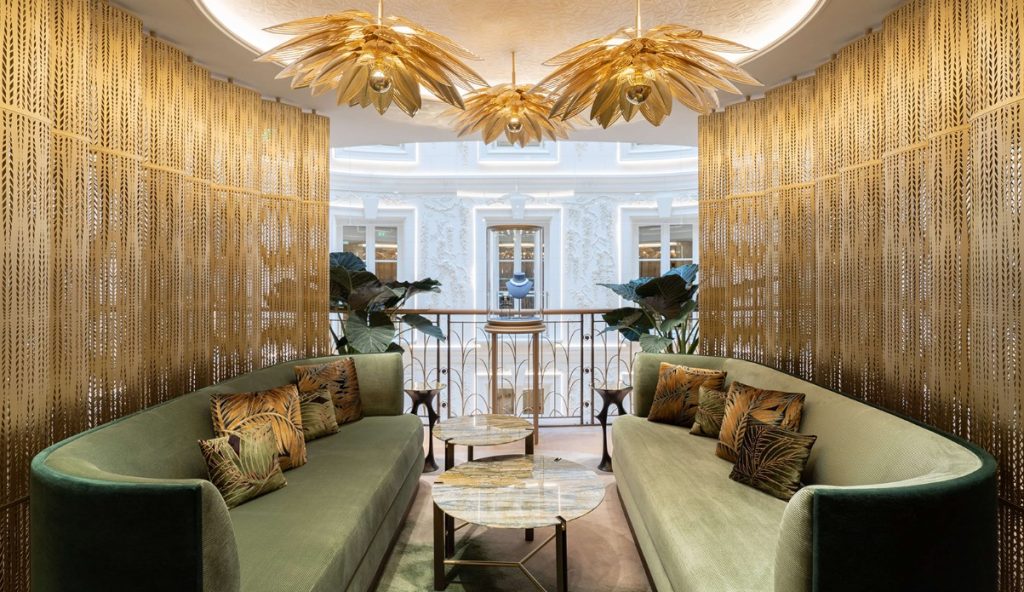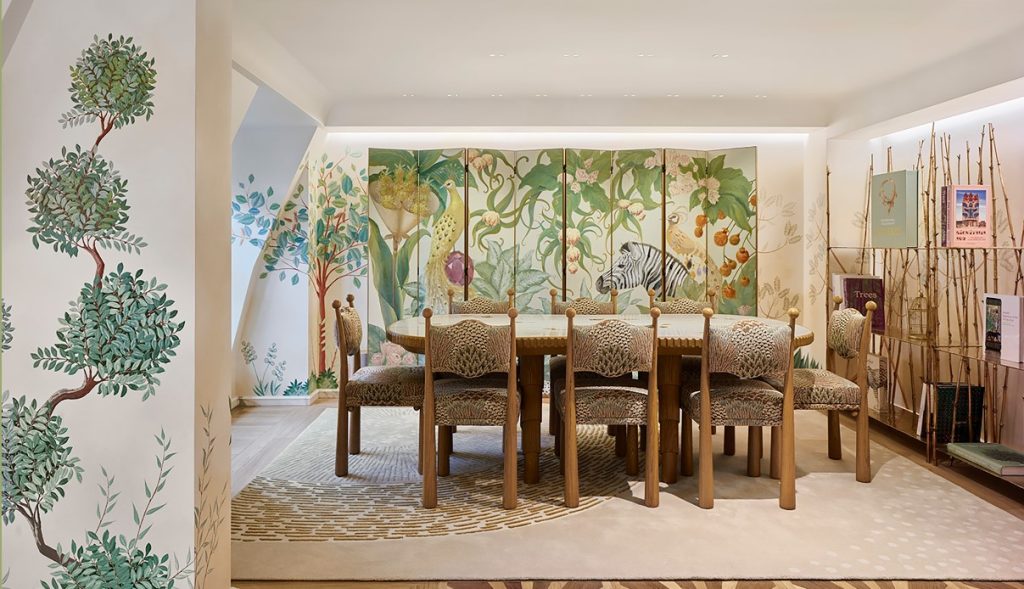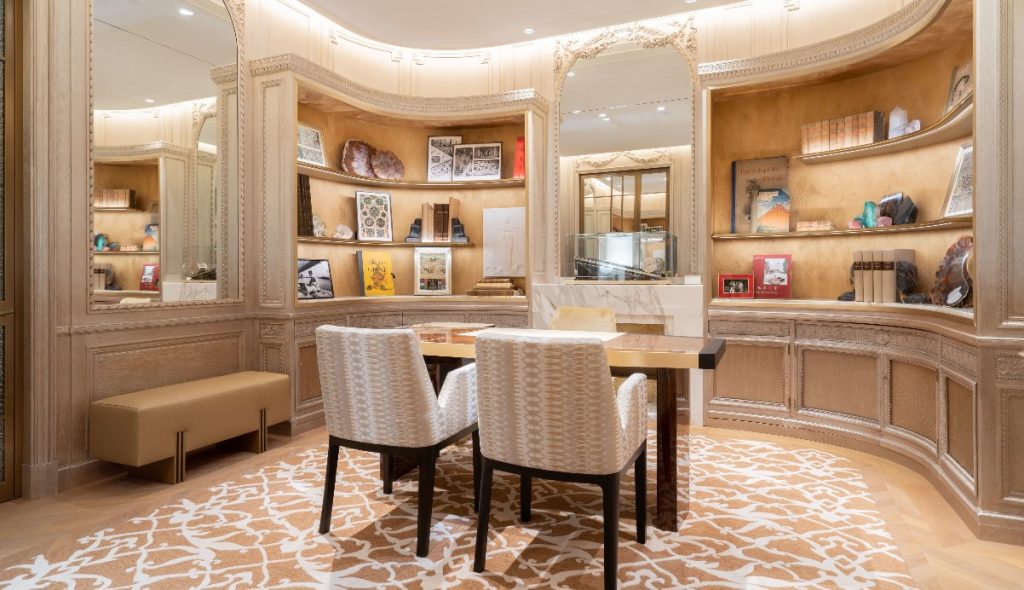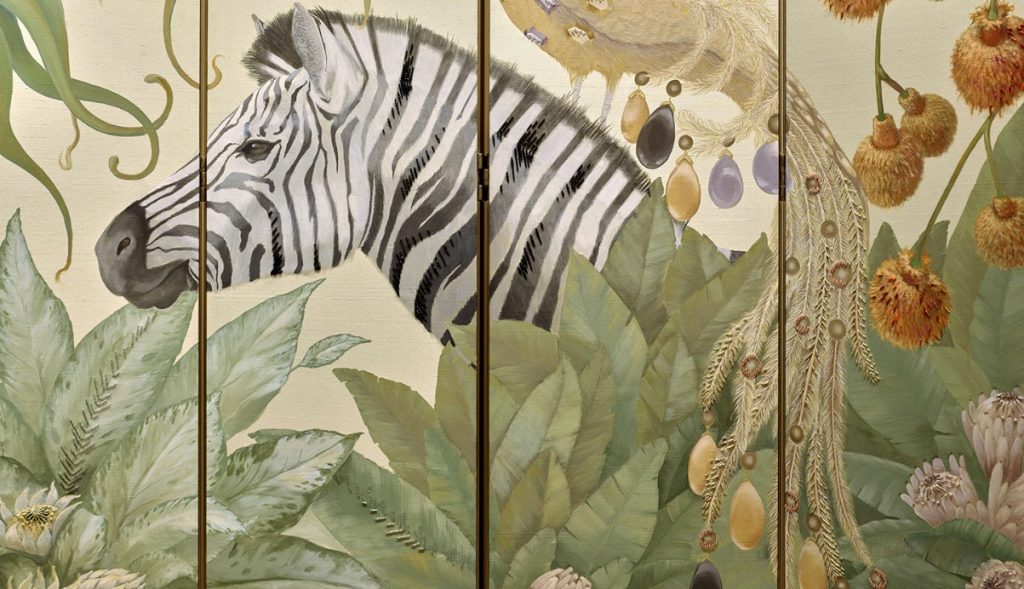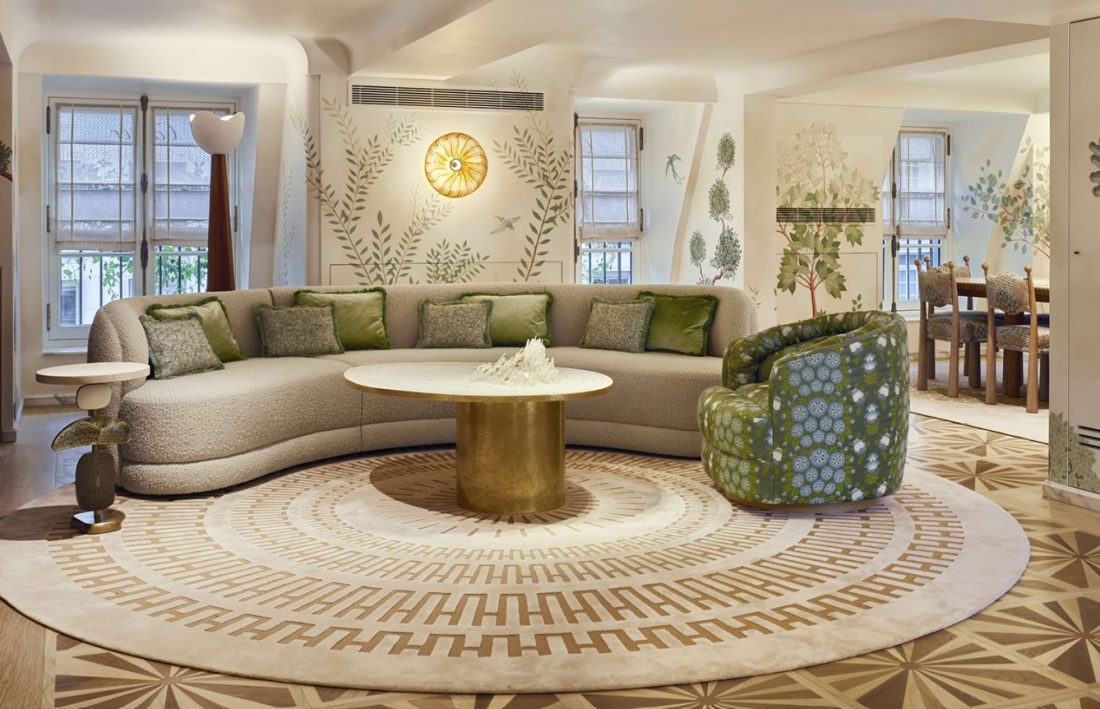
Article GoodMoods – LAURA GONZALEZ & NICOLAS FOUSSIER RECALL THE CARTIER RESIDENCE
GOODMOODS goes to meet talented architects with Plendi by Vinci Construction, a general contractor specialising in exceptional projects that juggle rare materials and singular know-how.
Right next to the legendary Place Vendôme, there’s an equally legendary boutique. Welcome to Cartier’s historic showcase at 13 rue de la Paix. Since 1899, the DNA of the House has been revealed at this address. A place apart, it has been completely redesigned by a trio of architects: Moinard-Bétaille, Studioparisien and Laura Gonzalez. For two years, Plendi worked to transform the premises according to their inspirations, during a titanic project.
On the fifth floor of the jewellery house, Laura Gonzalez designed the Résidence. An enchanting flat for privileged clients. Upstairs, the architect and Plendi have turned a cramped space into an intimate, luminous refuge. The result is an exquisite work of art that draws on the craftsmanship and heritage of Cartier. Come and visit.
The new Cartier space was designed by three architectural practices, including Laura Gonzalez. How did Plendi work to build a common thread between them ?
Nicolas Foussier : “There were in fact three worksites in the same building. That’s unusual. They all had to communicate fluidly and seamlessly. We had a real challenge with the floor circulation: on either side of the door, you change worlds… You go from a space punctuated with marble and brass designed by the Moinard Bétaille agency to wildlife and plant decorations imagined by Laura Gonzalez. Then it’s back downstairs to the high jewellery workshops designed by Studio Parisien, with their coffered staff ceilings. Each had its own style and we had to manage to coordinate them and create a synthesis between each of them”.
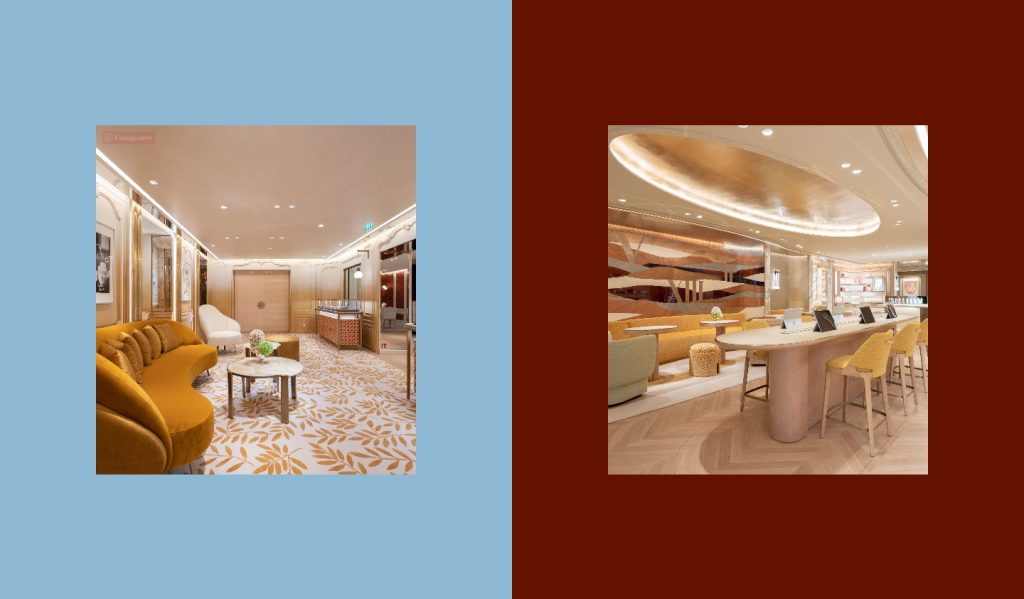
“To create continuity between projects, at Plendi we have architectural synthesis teams that are integrated into the construction team. They work on the interfaces between zones and the junctions between materials, to avoid creating a jigsaw puzzle or patchwork effect. You feel that from one room to the next, or from one floor to the next, you’re changing worlds, but you never get the feeling that they’ve been thought out separately.”
Laura Gonzalez : “I’ve worked with Cartier on several occasions to renovate their boutiques around the world. I was delighted to be able to return to the world of the house, this time with a new challenge. La Résidence is a different kind of project, at the crossroads between retail and private. It’s an emblematic location for the house, and I wanted to transform it while preserving its history and paying tribute to the house’s exceptional heritage of drawings, sketches and archives. It’s a space that has welcomed, and continues to welcome, the house’s most prestigious clients and fabulous events, so I wanted to recreate the comforting atmosphere of a living flat conducive to entertaining.”

When did you first visit 13 rue de la Paix ?
Laura Gonzalez : “I remember walking past it when I was young and being quite amazed by the window displays. I am very honoured to have participated in the renovation of this legendary address a few years later.”
Nicolas Foussier : “My first location scouts were in March 2020, right at the start of Covid… The weather was fine, the streets of Paris were deserted and the shop was closed. From time to time, one or two security guards from the Vendôme district would look at us a little sideways.
Two months later, Cartier and I visited the entire store, which was in the process of being moved. This allowed us to see the overall shape of the building and the atmosphere of the place. The brand explained the very historical and heritage aspect of the place. In particular, we saw all the existing woodwork that was still in place, which we then restored and put back.”
WHAT DID THIS ADDRESS MEAN TO YOU ?
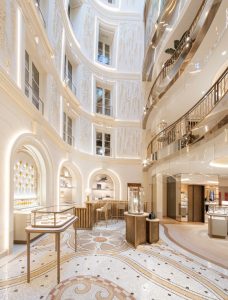
Laura Gonzalez :“Le 13 Paix is a celebration of French art de vivre, an ode to detail and Parisian architecture with its vaulted ceilings and elaborate parquet floors. For me, this place not only has a strong identity, but also brings together a multitude of influences and references to Louis Cartier’s travels. Above all, it is an institution in the Cartier ecosystem: an exclusive space nestled under the rooftops, a place to live, to exchange ideas and to be inspired.”

Nicolas Foussier : “It’s a very sentimental project for me. When we were discussing future projects that might come up in 2020, Xavier Arm, Plendi’s CEO, was scanning the sites and when he said “Rue de la Paix”, I stopped listening to the rest of the discussion. This really is a very special project, we’ve put a lot of energy into it, the whole team has worked enormously hard to achieve this final result.”
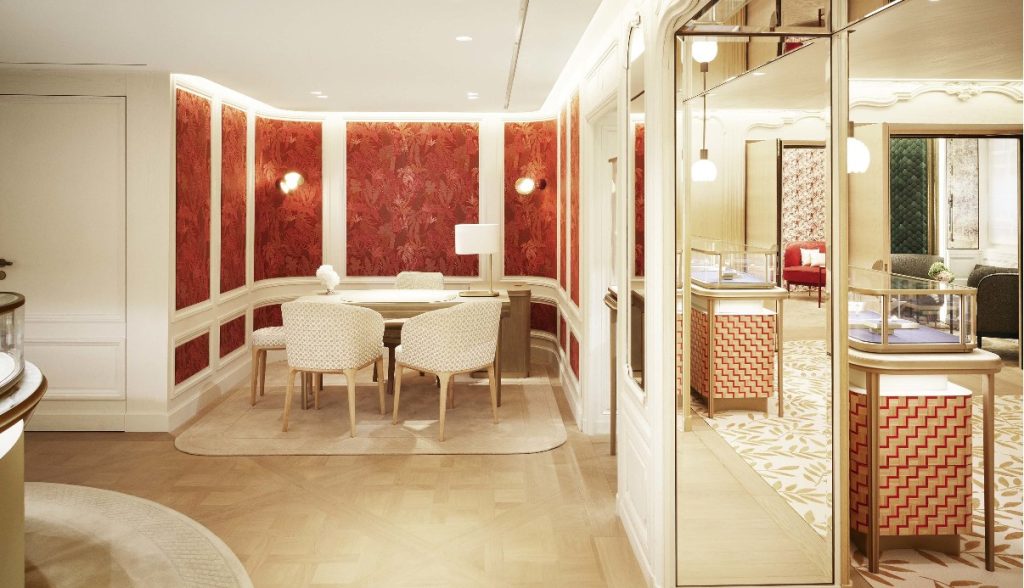
3 words to describe the Residence ?
NICOLAS FOUSSIER : “CALM, LIGHT AND LUXURY.”
LAURA GONZALEZ : “NATURAL, SOOTHING AND PRECIOUS.”
What inspired you throughout the project ?
Laura Gonzalez : “The house archives, of course, and the history of the place. I based my work largely on floral elements, a central element of Cartier, and the bestiary developed by Jeanne Toussaint, who created the emblematic panther. There are the fish brooches that I transposed onto the marble marquetry of the tabletop in the dining room, there are the zebras and peacocks on the folding screen… a whole profusion of animals, shapes and colours that make up the Cartier universe in my opinion.”

What was your greatest challenge in designing the Residence ?
Laura Gonzalez :“We had to meet Cartier’s requirements: it’s a space reserved for prestigious clients, almost private, but it still has a commercial vocation. So we had to juggle an intimate, comfortable atmosphere with references to the identity of the brand and its jewellery.”
Nicolas Foussier :
“For Plendi, it was a question of integrating all the constraints required by the shop for its operation. All the technical integration is completely hidden, the only thing you can see is the light fittings. The rest, if you don’t pay attention, is invisible…
After the Residence, the challenge was huge. In this cramped space, we had to manage to integrate a beautiful dining room, a large fully-equipped kitchen where you could invite a top chef… and also the winter garden, the bathroom and the meditation room. It wasn’t easy on paper.”

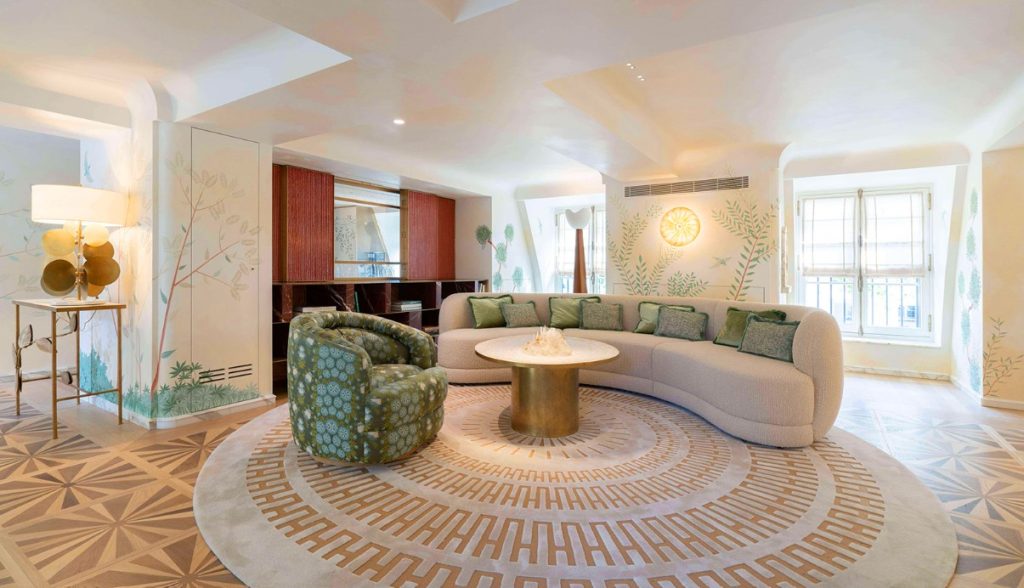
What colour palettes did you choose ?
Laura Gonzalez : “Green, beige, gold and a touch of blue, combined with different materials to create a harmonious, elegant look. The red line for this project, as for the boutiques, was to make reference to the house’s emblematic motifs and colours.”

What elements did you design to furnish the Residence ?
Laura Gonzalez : “The sofa and armchair, the tables and chairs… Everything has been made in close collaboration with French craftsmen.”
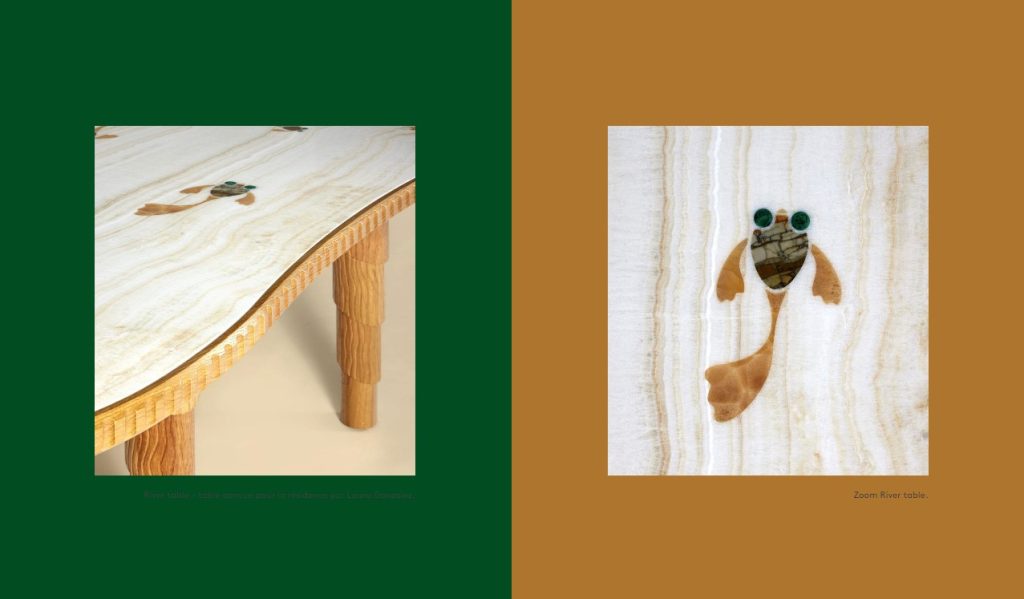
What are your favourite materials for the Résidence ?
Laura Gonzalez : “Mosaics, crystal, velvet and silk, wood and metal… The materials work together to create a special atmosphere.”
What artistic currents inspired you for this project ?
Laura Gonzalez :“I have a fairly neo-classical style, and I draw my inspiration from a wide variety of places and periods, always proposing a colourful and eclectic universe. The Cartier archives, of course, have been my main source of inspiration. There’s so much to choose from!”

Has Cartier’s cultural heritage been a creative playground ?
Laura Gonzalez :“Of course! The House’s heritage is so vast that it’s hard not to find something you like. There’s such a mix of classic codes with contemporary touches, such a work of reinterpretation of the archives with new techniques, it fascinates me! There’s a huge variety of influences, and therefore styles, and I find my way around. I’m always looking for new sources of inspiration and there are so many possibilities with Cartier that yes, I think we can talk about a creative playground.”
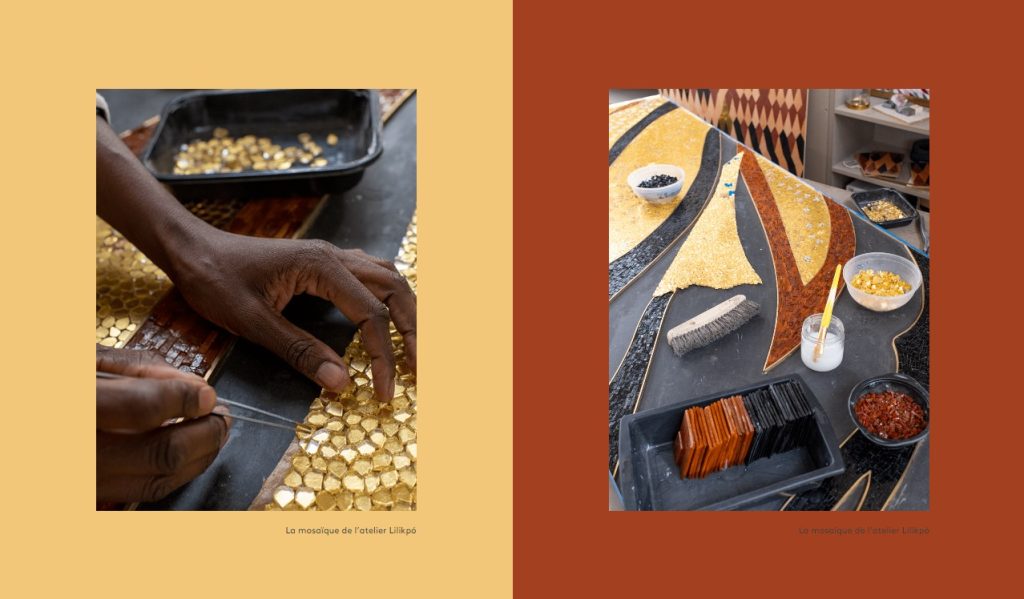
Nicolas Foussier : “In any case, it was essential to respect the history and heritage of Cartier, especially at 13 rue de la Paix, which is the historic boutique. Using Cartier’s history as a guiding principle meant that we could move from one room or floor to another, changing the atmosphere but remaining true to the Cartier codes.
In the Agence Moinard Bétaille areas, we made extensive use of period woodwork, particularly in the Louis Cartier lounge. Another anecdote: in the Jean Cocteau salon, we created a secret library with a one-way mirror displaying the writer’s academician’s sword, which was made by Cartier. On the first floor, we have the Jeanne Toussaint salon, which was Cartier’s artistic director. The straw marquetry consoles are modelled on the small jewellery boxes she created. On the metalwork, railings and banisters of the patio and monumental staircase, details of the Love bracelet with a split-head screw were used.
Another detail, on a coffered staff ceiling, was the Clash rings. And at the junction of these different coffers, there was a small construction hole that needed to be filled. So we came to Cartier with the idea of putting a cabochon to close it off, and we submitted the idea of doing it in the form of the Plendi star. We are now part of Cartier’s history.”
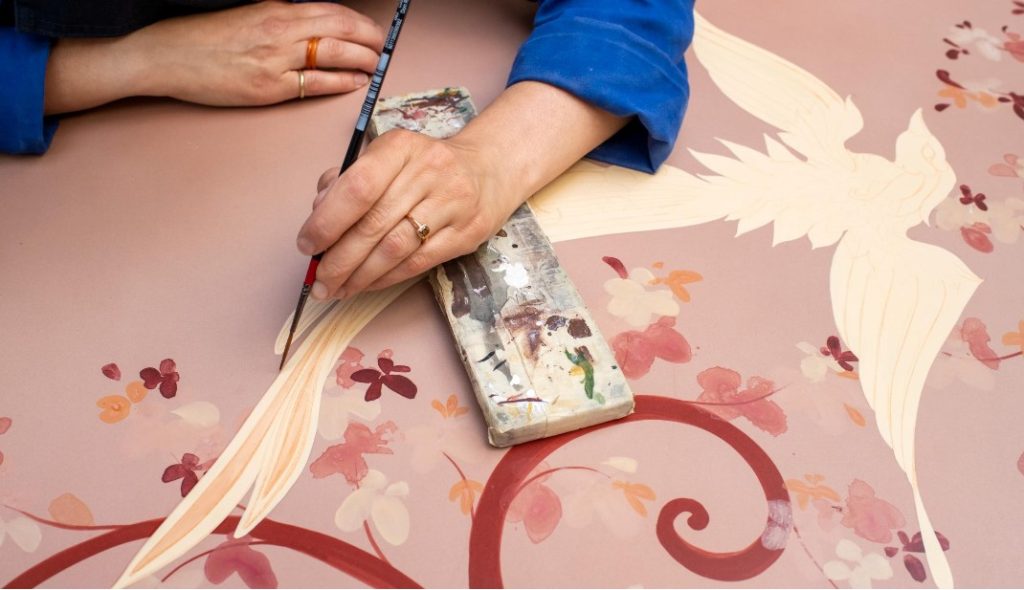
To see this article on goodMoods click here



